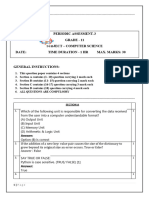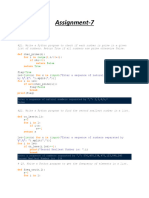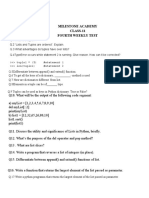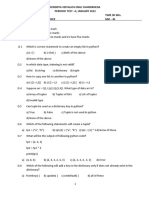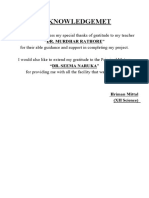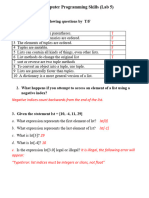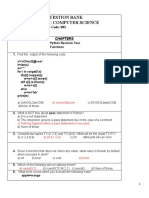100% found this document useful (1 vote)
377 views2 pagesClass 11 Python Practice Questions
The document contains a series of programming tasks and questions related to Python, including code outputs, linear search implementation, frequency counting in lists, list manipulations, tuple operations, dictionary queries, and the differences between dictionary methods. It also includes specific examples to illustrate the concepts. The tasks range from simple coding exercises to more complex questions about data structures in Python.
Uploaded by
Vimal VijayakumarCopyright
© © All Rights Reserved
We take content rights seriously. If you suspect this is your content, claim it here.
Available Formats
Download as TXT, PDF, TXT or read online on Scribd
100% found this document useful (1 vote)
377 views2 pagesClass 11 Python Practice Questions
The document contains a series of programming tasks and questions related to Python, including code outputs, linear search implementation, frequency counting in lists, list manipulations, tuple operations, dictionary queries, and the differences between dictionary methods. It also includes specific examples to illustrate the concepts. The tasks range from simple coding exercises to more complex questions about data structures in Python.
Uploaded by
Vimal VijayakumarCopyright
© © All Rights Reserved
We take content rights seriously. If you suspect this is your content, claim it here.
Available Formats
Download as TXT, PDF, TXT or read online on Scribd
/ 2

























